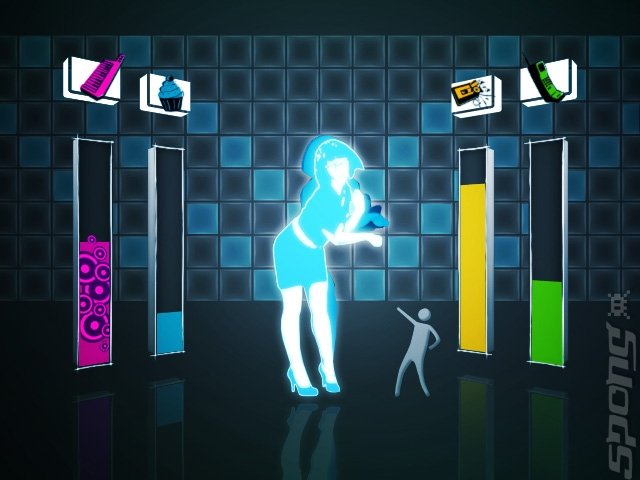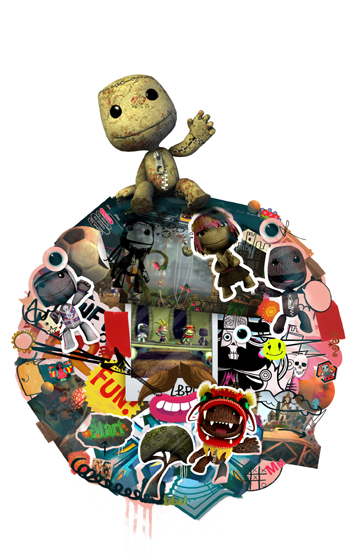Last week our focus was on handheld learning and looking at ways we can use this in school to enhance the way children learn. We have had the opportunity to look at using ipod touches, ipads and iphones looking at the software available to download on these devices and getting the opportunity to take these devices home and explore these and learn how we could use these with children.
What was even better was to consolidate all we had learned in the session about handheld learning and time we looked at this at home, we were able to then use handheld learning with a primary six class through apps available on the ipods.
During the time we were with the children we taught them how to use the ipods and various apps we required throughout the afternoon and then set off on a treasure hunt around the university campus using QR codes which had been previously set up by us. These QR codes allowed children to scan them using the QR reader app on their ipod device and gave them a task to do followed by where to go for their next clue. Below is a picture of what a QR code looks like. These can be made using the Sparqcode website and can be personalised by changing the colour and font you wish to select.
Here is a short clip which explains what exactly QR codes are and just a few of the ways these can be used in everyday life.
At each of the QR codes in the treasure hunt we followed the same format as we thought this would be much easier to follow. Below is an example of what one of our QR code said when it was scanned and shows the format we used for this.
Task: Do 10 star jumps and get a student or teacher to video your group doing this together
Next: Once you have done this head to the library.
I think this format worked really well as it broke down the two parts and made it clear to children they had to do the task and then look at where they need to go to find their next clue. Children seemed to understand this quite well and required little assistance in explaining the tasks as we made sure we made them as simple and easy to understand as possible.
The children also picked up how to scan the QR codes fairly quickly which meant we could have more time doing the treasure hunt and other related activities.
Apps
Throughout the treasure hunt we got children to make use of a range of the apps on the ipod in order to get them to become more familiar with the ipod touch devices and practise using these. The tasks the children had to do involved using the camera to take photos, make videos and use iTalk to record themselves saying different things they were asked to.
Story cubes
As we all as using the QR reader app, during the treasure hunt one of the task the children had to was create a short story using the story cubes app. Within this a number of cubes come up which are dice with pictures on them. What children have to do with this is shake the ipod and they will be given a combination of cubes each with a different picture on. The picture below shows the type of thing that would be visible on children's screens when using the story cubes app.
 We challenged the children to use three or more of the cubes they were given to create a short story which mentioned what was in three of the pictures. We then got children to record these stories on the ipods using the iTalk app so they could be used later on.
We challenged the children to use three or more of the cubes they were given to create a short story which mentioned what was in three of the pictures. We then got children to record these stories on the ipods using the iTalk app so they could be used later on.
Evaluation
Overall I think the QR code treasure hunt worked well with the primary six class. We were able to divide the children into groups of 3 and get them to work together in their groups using the different apps and making sure children each got a shot of using the ipod to do the different tasks they had to do. The children were all really enthusiastic about the treasure hunt and were always eager to go to the next place to find out what they had to do next.
Difficulties experienced
Some of the difficulties that were experienced however were with children having to share a fairly small device between a few of them. As ipods are expensive the chances are you are going to have to get children to work in groups with these but some children struggled a bit with this and wanted to use the ipod themselves. Children also finished the tasks at different times and as a result they were ready to move to the next one but had to wait for the other groups to finish. To try and overcome this we spent time discussing what the children were doing and what they think they might have to do for the next challenge to keep them going until the rest of the children had finished.
iBook Creator
After we finished the QR code treasure hunt with the children we got them back together and they were shown as a class how to use the iBook Creator app. This app allows you to create your own interactive books on an ipod, iphone or ipad device. We gave the children the task of creating a book of their adventure during the QR Treasure hunt incorporating photos and videos of all they did during the afternoon and telling their story.
As a group we had three small groups to support during the time they did the iBooks. One of the groups got really stuck into the task and put a lot of effort in which allowed them to produce some really good work. For the other two groups some of the children were on task and tried really hard but members in their group did not co-operate which made making decisions difficult for these two groups and meant the children did not enjoy what they were doing as much. We tried to encourage them to make decisions fairly and explained that children may not always get the choice they wanted as they are part of a team and they all need to have a say. Children also had to share the ipods and for some of them they wanted it all the time so we had to make sure everyone got a turn to allow them to become more familiar with the device and apps they could use. In addition to this children had to be really patient when trying to create their books as it was quite fiddly. For some children this was quite difficult and they become frustrated as they couldn't always do what they wanted the book to do first time.
Overall I think the children really did enjoy the afternoon and in particular the QR treasure hunt as it allowed them to get out and about and they were all quite competitive and eager to keep going. Through the treasure hunt we incorporated the use of various apps and I feel this will have helped the children in becoming more familiar with how to use the ipods and get to know how to use the different apps. Although the iBooks did not work as well as we hoped they would I think if the children had more time they may have been able to put more into it and enjoy it more as they were all tired from the treasure hunt and only had a limited amount of time to finish it which had an effect on what they were able to produce at the time.
As a group we had three small groups to support during the time they did the iBooks. One of the groups got really stuck into the task and put a lot of effort in which allowed them to produce some really good work. For the other two groups some of the children were on task and tried really hard but members in their group did not co-operate which made making decisions difficult for these two groups and meant the children did not enjoy what they were doing as much. We tried to encourage them to make decisions fairly and explained that children may not always get the choice they wanted as they are part of a team and they all need to have a say. Children also had to share the ipods and for some of them they wanted it all the time so we had to make sure everyone got a turn to allow them to become more familiar with the device and apps they could use. In addition to this children had to be really patient when trying to create their books as it was quite fiddly. For some children this was quite difficult and they become frustrated as they couldn't always do what they wanted the book to do first time.
Overall I think the children really did enjoy the afternoon and in particular the QR treasure hunt as it allowed them to get out and about and they were all quite competitive and eager to keep going. Through the treasure hunt we incorporated the use of various apps and I feel this will have helped the children in becoming more familiar with how to use the ipods and get to know how to use the different apps. Although the iBooks did not work as well as we hoped they would I think if the children had more time they may have been able to put more into it and enjoy it more as they were all tired from the treasure hunt and only had a limited amount of time to finish it which had an effect on what they were able to produce at the time.

.jpg)






























